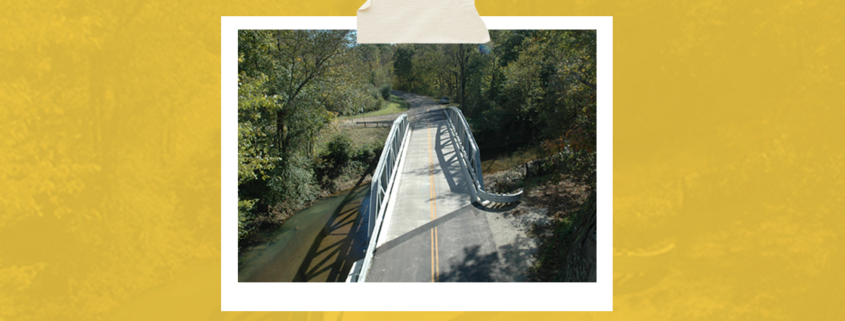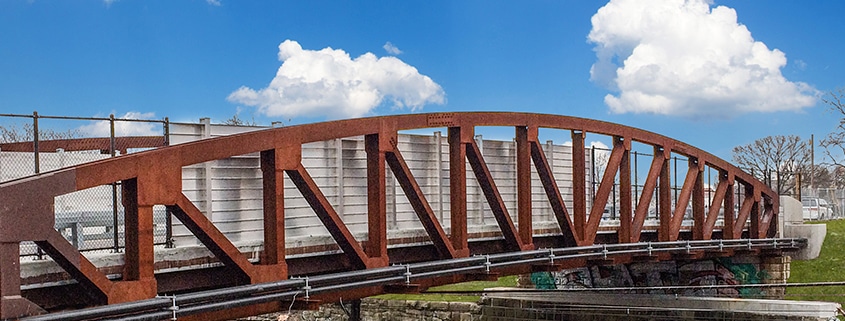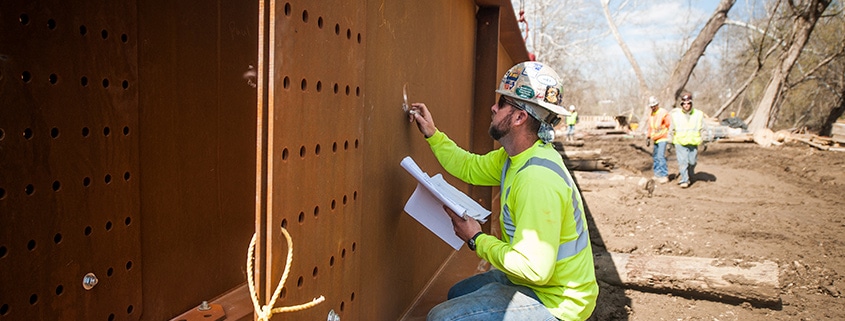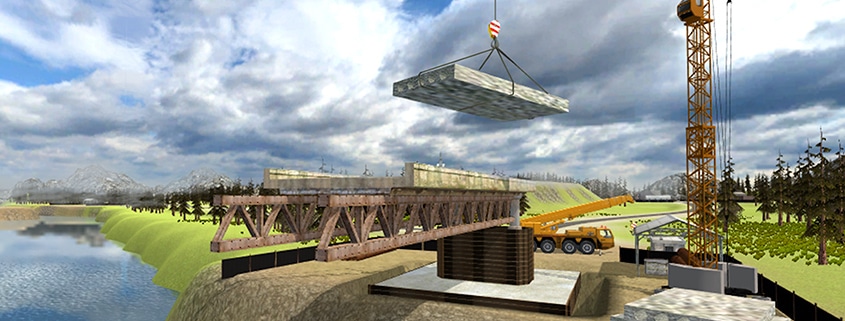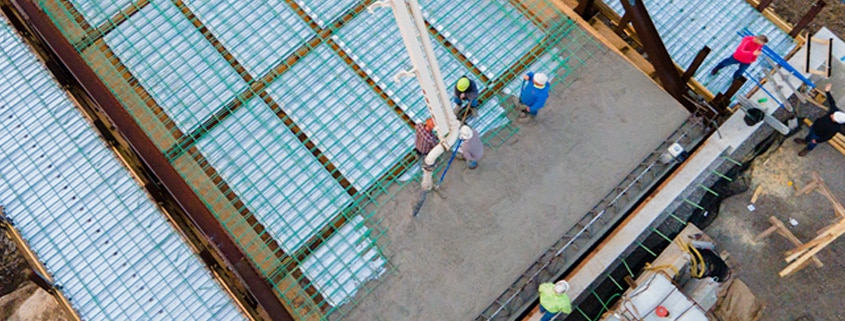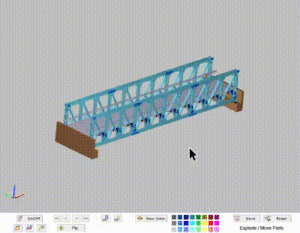Have you ever driven over a bridge and wondered how old it was? In the United States alone there are more than 617,000 bridges, 12% of which are aged 80 years or older. But were all those bridges created at the same time or with the same method? What exactly is the typical lifespan of a bridge? And how many bridges are considered structurally deficient?
Contributing Elements to a Bridge’s Lifespan
Nowadays, bridges have become a natural part of everyday life. Your daily commute may even consist of traveling through a bridge or maybe two. Since they are vital to our economy and public safety, the government periodically mandates national bridge inspections to determine structurally deficient bridges.
Ultimately, there is no one number that fits the lifespan of all bridges across America. Each bridge has its own expected lifecycle but there are ways to estimate its lifespan. Generally, it’s believed that bridges are expected to function for 50-70 years however this is often not the case. Currently, only 42% of all bridges in the United States are at least 50 years old.
The lifespan of a bridge differs according to its design, construction, and location. Each component contributes either positively or negatively to the overall lifespan and structure of a bridge.
Materials
One of the most obvious factors that contribute to the lifespan and eventual structural deficits of a bridge is the material. In fact, both the concrete industry and the steel industry claim several advantages above the other for the Life Cycle Costs of a bridge.
Steel
Steel is a popular construction material due to its flexible and durable nature. The great thing about steel is that it is recyclable and still maintains its initial strength and integrity. Galvanized steel is even more durable plus it requires less upkeep.
Structural steel is a high-quality material that is readily available worldwide in certified grades and produced in various shapes and sizes. Currently, it is estimated that steel bridges have a lifespan of over 100 years. However, this number rapidly decreases as the bridge erodes or even with poor construction quality.
The deterioration of a bridge is created by a combination of several elements, for steel, it is often caused by corrosion, fatigue, stress corrosion, and damage from accidents.
Concrete
Another commonly utilized material is concrete. Concrete bridges are estimated to have a lifespan of over 100 years, again this number changes with daily wear and tear.
The causes of concrete deterioration are typically cracking, spalling, scaling, corrosion, and damage from accidents. In addition, cracks over reinforced steel allow water and chemicals to penetrate accelerating rusting which exerts great forces that pop the concrete.
Not to mention, extreme weather conditions, the presence of chlorides in de-icing salts, and cycles of freeze and thaw all contribute to the erosion of a bridge and its lifespan.
Timber
Timber, which is used for short-span and rural areas or pedestrian bridges is estimated to last only 20–30 years. This could be due to several reasons such as many engineers are less familiar with this material than their counterparts, or because there are fewer treatment options available for timber.
Nevertheless, the accurate range of which timber lasts is uncertain as there are very few data that exist that are based on actual performance data.
However, that doesn’t make timber a poor option. Timber is a lightweight material compared to concrete but still strong. This advantage plus low maintenance and repair costs make timber ideal in certain situations.
Plus studies suggest that timber is a durable option in highway bridge superstructures and that it can perform well for more than 70 years when properly pressure-treated with preservatives.
Location
The location of a bridge plays an instrumental part in its overall structural deficiency. Depending on the environment, it could accelerate the deterioration of the bridge.
Recently, there has been a slightly positive trend in addressing the maintenance of structurally deficient bridges. However, progress is not universal because states face different challenges when it comes to maintaining, repairing, and replacing bridges.
Urban
When it comes to urban locations, the major factor to watch out for is a higher traffic volume. The combination of a heavier load and volume further leads to the wear of the bridge. There are various ways for builders to slow this process down such as galvanization and other special treatments.
Rural
Unlike urban settings, rural bridges don’t have such a large volume of traffic. Unfortunately, it is because of this that rural bridges are typically not designed to withstand the growing numbers and weight of traffic and freight trucks. In actuality, rural bridges and transportation play a key role in our economy’s success and for rural communities.
However, more and more bridges in rural communities are experiencing rapid deterioration without the proper care and maintenance to last.
Coastal
Bridges that are located in coastal environments face unique challenges due to their location. Bridges in marine environments often experience corrosion-induced damage due to high sea salt and humidity. In addition, strength loss in the splash and the tidal zone is more common and significant than in the atmospheric zone.
An example of the distinct problems faced by coastal bridges is illustrated by the Morandi Bridge in Italy. In 2018, this cable-stayed bridge suddenly collapsed causing the death of 43 individuals. The collapse was reported as the fault of a weakened cable that deteriorated from corrosion. The degradation was caused by atmospheric agents and the proximity of the marine environment eroded the structure and integrity of the bridge.
Structural Deficient Bridges in America
Structurally deficient bridges are those that are in need of repair or maintenance due to the deterioration incurred throughout the bridge’s lifetime. Recently, 7.5% of highway bridges were designated structurally deficient. This is a striking improvement from the previous 12% record. In addition, the average age of America’s bridges is increasing to 44 years.
The plan is that the overall lifespan of a bridge should increase over time as more techniques, treatments, and designs are discovered in the future.
Build a Bridge that will Last Lifetimes with U.S. Bridge
Are you looking for an experienced industry leader company to assist with your building projects? Here at U.S. Bridge, we’ve built for different projects all across the globe; and we know that choosing the right material for your bridge takes a combination of experience, expertise, and skill.
To learn more about our bridge engineering and manufacturing, contact us for a quote or to answer any questions. Or start building your scope and bridge with our new interactive tool the Bridge Scope.

